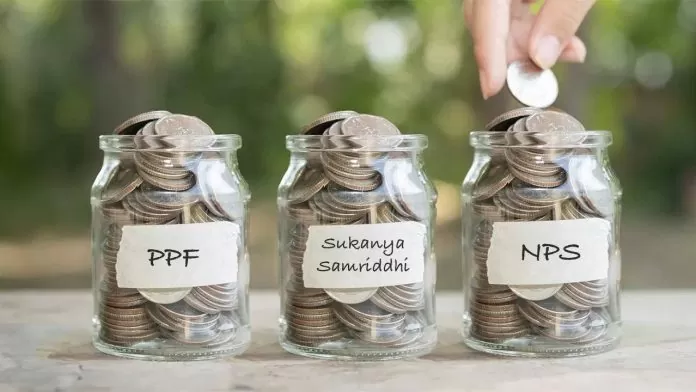
National Pension System: Under NPS you get tax exemption on investments up to Rs 50 thousand. Under the new tax regime from April 1, 2023, the income tax slab was changed and the basic exemption limit was increased from Rs 2.5 lakh to Rs 3 lakh in a financial year.
PPF Interest Rate: If you invest money through PPF account (PPF) or Sukanya Samriddhi Yojana (SSY) or National Pension System (NPS), then this news is useful for you. Actually, under small savings schemes, you have to deposit a minimum amount in your account every financial year.
To keep the account active, it is necessary to maintain minimum balance. If the account holder fails to deposit the minimum amount every year, the account may be frozen. Apart from this, penalty may also be imposed on the account holder.
The last date for depositing the minimum amount in PPF, NPS and Sukanya Samriddhi account for the current financial year is March 31, 2024. In the budget of 2023, the new tax regime has been made more attractive by the government.
Under the new tax regime from April 1, 2023, the income tax slab was changed and the basic exemption limit was increased from Rs 2.5 lakh to Rs 3 lakh in a financial year. Apart from this, standard deduction is also available in the new tax regime. Under this, you do not have to pay any tax on income up to Rs 7 lakh.
Fine may be imposed for not depositing the minimum amount
In such a situation, it is possible that you may have selected the new tax regime to pay your tax for the current financial year 2023-24. In such a situation, if you were investing in small savings schemes along with paying tax under the old tax regime till the last financial year, then like every year,
you will get the savings like PPF, Sukanya Samriddhi Yojana (SSY) and NPS. Will have to invest in the scheme. Even if you select the new tax regime, you will not get the benefit of tax exemption on investments in these savings schemes. In fact, fine can also be imposed for not depositing the minimum amount in all these accounts.
How much money is necessary to deposit in PPF?
According to PPF Rules 2019, it is necessary to deposit at least Rs 500 in the PPF account every financial year. If the minimum amount is not deposited then the PPF account will become inactive. Loan and withdrawal facilities are not available when the PPF account is inactive.
You can revive an inactive account before maturity. A fee of Rs 50 is charged every year in case of account default. Apart from the default fee, the depositor also has to deposit a minimum amount of Rs 500 every year. You are required to deposit a minimum amount of Rs 500 every year in this account.
Sukanya Samriddhi Yojana
This is also a tax saving investment option for those people who want to save for their girl child. According to the rules of SSY scheme, account holders are required to deposit a minimum of Rs 250 every financial year. If minimum Rs 250 is not deposited in the account in a financial year then Sukanya account is considered as default account. The rules of the scheme allow any default account to be revived at any time before maturity. To revive the account, one has to pay Rs 50 for every default year.
NPS
Some taxpayers open an NPS account to save tax by investing an additional Rs 50,000 under Section 80CCD(1B) of the Income Tax Act. Under Section 80C, investment of Rs 50,000 is allowed more than the limit of Rs 1.5 lakh. According to the rules of NPS, it is necessary for any person to deposit at least Rs 1,000 every financial year. But if your account is inactive then you can activate it by depositing Rs 500. But here it is important to keep in mind that you will have to deposit at least Rs 1000 in a financial year.












